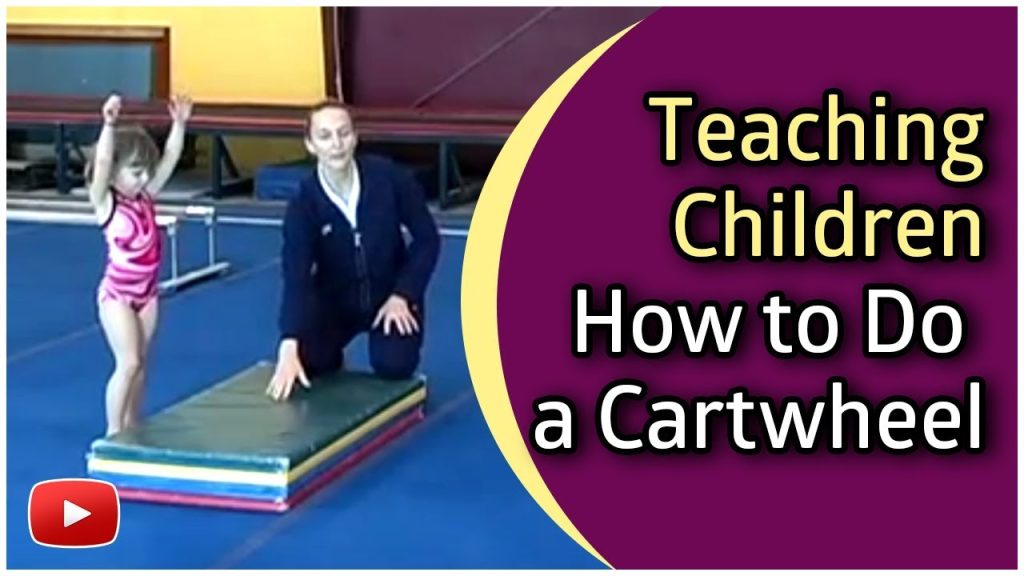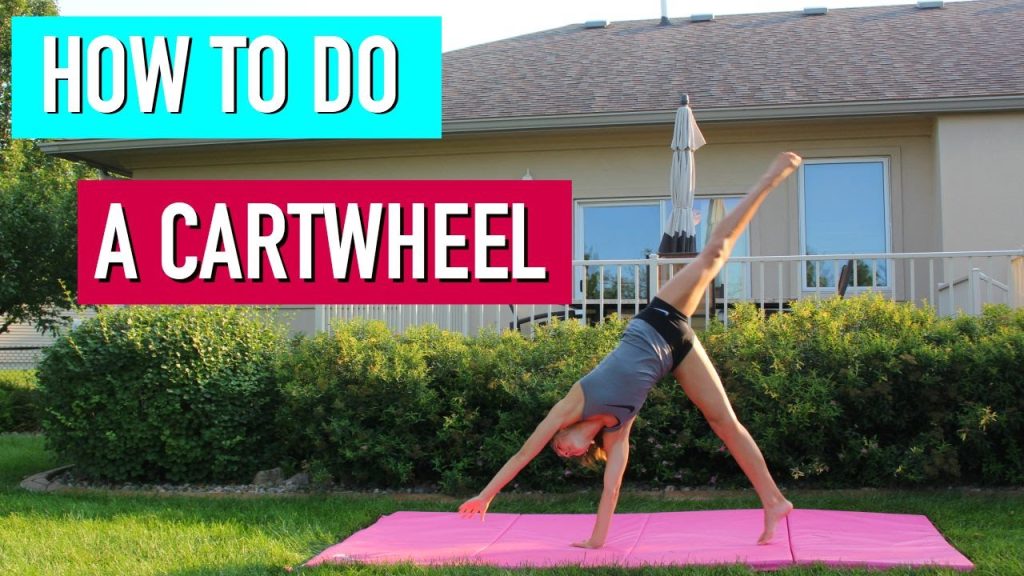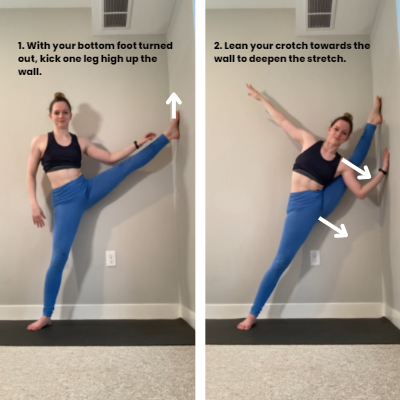Teaching a cartwheel in gymnastics can seem daunting. But with the right approach, it’s manageable.
A cartwheel is a fundamental skill in gymnastics. It helps build coordination, strength, and confidence. Many beginners find it tricky at first. But with patience and practice, anyone can learn it. This guide will break down the steps. You’ll learn how to make the process simple and fun.
So, whether you’re a coach or a parent, you’ll find these tips useful. Let’s dive in and discover how to teach a cartwheel effectively.
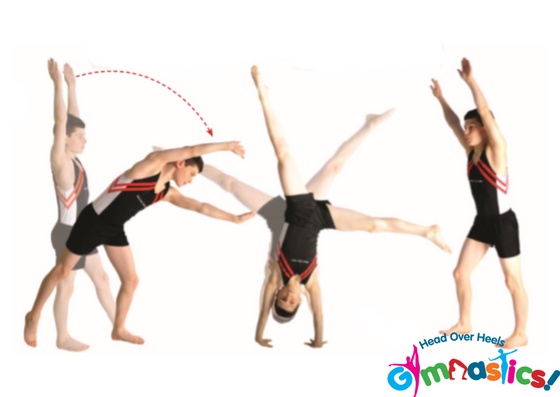
Credit: headoverheelsgymnastics.co.uk
Introduction To Cartwheels
Teaching a cartwheel is an exciting part of gymnastics. It is a fundamental skill that builds strength, coordination, and confidence. Cartwheels are often the first trick children learn. They lay the foundation for more complex movements. In this section, we will explore the basics of cartwheels.
Importance Of Cartwheels
Cartwheels are crucial in gymnastics. They help develop balance and flexibility. These skills are essential for all gymnastic activities. Practicing cartwheels strengthens core muscles. It also improves hand-eye coordination. Understanding the importance of cartwheels is the first step in teaching them.
Basic Requirements
Before starting, ensure the child has the basic requirements. They need a safe, open space to practice. Comfortable clothing is also important. The child should be able to perform a handstand. This shows they have the necessary upper body strength. A positive attitude is also key. Encouragement and patience make the learning process enjoyable.
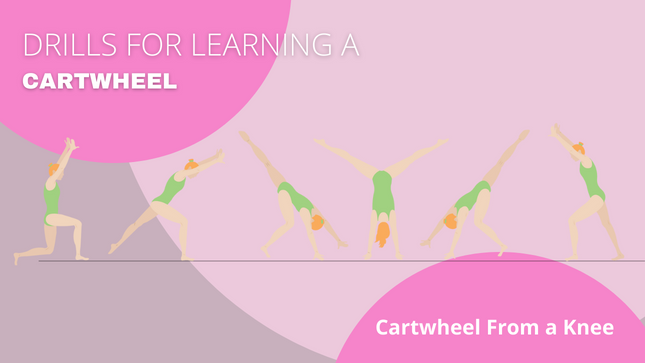
Credit: gymnasticshq.com
Warm-up Exercises
Before teaching a cartwheel in gymnastics, warming up is crucial. Warm-up exercises prepare the body for physical activity. They reduce the risk of injuries and improve performance. In this section, we will discuss effective warm-up exercises.
Stretching Techniques
Start with dynamic stretches. Arm circles are great for warming up the shoulders. Swing your arms forward and backward in small circles. Gradually increase the size of the circles.
Leg swings help to loosen up the hips. Stand next to a wall for balance. Swing one leg forward and backward, then switch legs. Repeat for several repetitions.
Lunge stretches are perfect for the legs. Step forward into a lunge position. Hold for a few seconds, then switch legs. This stretch targets the thighs and hips.
Strengthening Drills
Strengthening drills are essential for building muscle strength. Start with push-ups. They strengthen the arms, shoulders, and chest. Aim for 10 to 15 repetitions.
Planks help build core strength. Hold a plank position for 20 to 30 seconds. Keep your body straight and avoid sagging.
Squats are great for the legs and glutes. Perform 10 to 15 squats. Ensure your knees don’t go past your toes.
These exercises will prepare the body for a successful cartwheel. Warm-up exercises are vital for a safe and effective gymnastics practice.
Proper Stance
To teach a cartwheel in gymnastics, it is important to start with the proper stance. A correct stance sets the foundation for a smooth and successful cartwheel. Let’s break down the key elements of the proper stance, focusing on hand placement and foot positioning.
Hand Placement
Hand placement plays a crucial role in executing a cartwheel. Begin by stretching the arms straight above the head. Ensure the hands are shoulder-width apart. This helps maintain balance and control.
Next, as you prepare to start the cartwheel, place the leading hand (right for right-handed, left for left-handed) on the ground. Ensure the fingers point forward. The second hand should follow, placed in line with the first hand. This alignment provides stability.
Foot Positioning
Foot positioning is equally important. Start with feet together. Choose a leading foot to step forward. This foot should point straight ahead. The back foot remains in place, toes pointing slightly outward.
As the cartwheel begins, the leading foot pushes off the ground. The back foot follows, lifting to maintain balance. Ensure both feet land in a straight line, mirroring the starting position.
Remember, proper stance is key to mastering a cartwheel. Practice these steps to build confidence and skill.
Initial Movements
Teaching a cartwheel in gymnastics involves understanding the initial movements. These movements are the foundation for executing a flawless cartwheel. By mastering these steps, gymnasts can perform with confidence and precision.
Starting Pose
The starting pose is crucial for balance and control. Begin by standing tall with feet together. Raise your arms above your head, keeping them straight. This position prepares the body for the cartwheel motion.
Here is a step-by-step guide to the starting pose:
- Stand with feet together.
- Raise arms straight up.
- Keep the body tight and straight.
- Focus on a fixed point to maintain balance.
First Hand Down
Next, place the first hand down on the ground. This hand will guide the body’s rotation. Start by bending at the waist, keeping your legs straight.
Follow these steps to place the first hand down correctly:
- Bend at the waist.
- Extend your dominant hand towards the ground.
- Keep the opposite arm extended in the air for balance.
- Place your hand firmly on the ground, fingers spread for stability.
Ensure the hand is placed directly in line with the body’s center of gravity. This positioning helps maintain control during the cartwheel.
Executing The Cartwheel
The cartwheel is a fundamental move in gymnastics. It’s essential to teach it correctly. Executing the cartwheel requires a combination of strength, balance, and coordination. In this section, we’ll break down the key steps to ensure your students can perform a cartwheel with confidence and precision.
Leg Kick
The leg kick is the first crucial step in a cartwheel. Start by having the gymnast stand upright with arms stretched overhead. The lead leg will take the initial step.
- Step forward with the lead leg.
- Keep the arms straight and in line with the ears.
- Kick the rear leg high into the air.
- Ensure the lead leg follows and lifts off the ground.
It’s important to maintain a straight line from hands to toes. This helps in achieving a balanced and smooth cartwheel.
Second Hand Down
After the leg kick, the gymnast needs to place the second hand on the ground. This phase is crucial for maintaining balance and momentum.
- As the lead leg lifts, the first hand touches the ground.
- Quickly place the second hand down, shoulder-width apart.
- Keep the arms locked and strong.
- Maintain a straight line through the body.
By keeping the arms strong and straight, the gymnast can support their body weight effectively. This ensures a fluid motion as the legs pass over the head.
Teaching a cartwheel involves breaking down each step. Focus on the leg kick and placing the second hand down. This will help your students master the move with ease.
Finishing The Cartwheel
Finishing a cartwheel with grace is vital in gymnastics. It shows control and precision. This section breaks down the key elements to ensure a strong finish.
Foot Landing
Proper foot landing is crucial. The gymnast should land on the ball of the first foot. Then, quickly follow with the second foot. Both feet should point forward.
Here are some tips for foot landing:
- Keep the legs straight during the landing.
- Ensure the feet are shoulder-width apart.
- Maintain balance by engaging the core muscles.
Practicing these steps repeatedly helps in achieving a perfect foot landing.
Ending Pose
An impressive ending pose concludes the cartwheel. It gives a sense of completion and poise.
To achieve this:
- Stand up straight after the feet land.
- Extend your arms above your head.
- Point your toes and tighten your legs.
Check the table below for common ending poses:
| Pose | Description |
|---|---|
| Arms Up | Arms straight above the head, feet together. |
| Star Pose | Arms and legs spread out wide, forming a star shape. |
| Salute | One hand on hip, other hand saluting. |
Practicing these poses can help in finishing the cartwheel with style and confidence.
Common Mistakes
Teaching a cartwheel can be challenging. Students often make mistakes that hinder their progress. Understanding these common errors helps in correcting them effectively.
Incorrect Hand Placement
Proper hand placement is crucial for a successful cartwheel. Many beginners place their hands too close together or too far apart. This imbalance can cause falls or injuries.
| Hand Position | Issue |
|---|---|
| Too Close | Loss of balance |
| Too Far Apart | Strain on arms |
Place hands shoulder-width apart. This provides stability and support.
Improper Leg Movement
Leg movement is key in performing a cartwheel. Many beginners bend their knees or fail to kick their legs high enough. This results in a wobbly execution.
- Bent knees
- Low leg kick
Focus on keeping legs straight and kicking them high. This ensures a smooth, balanced cartwheel.
Remember these tips to avoid common mistakes. This will make teaching cartwheels easier and more effective.

Credit: www.youtube.com
Tips For Success
Teaching a cartwheel in gymnastics requires patience, practice, and the right approach. By following these Tips for Success, you can help gymnasts develop their skills effectively. The focus should be on building confidence and establishing a consistent practice routine.
Practice Routines
Consistency is key in mastering a cartwheel. Establish regular practice sessions. Use the following steps:
- Warm-up: Stretch muscles and joints to prevent injuries.
- Drills: Break down the cartwheel into smaller steps.
- Repetition: Encourage multiple attempts to build muscle memory.
Start with basic drills like handstands and side rolls. Gradually introduce the full cartwheel motion. Ensure each gymnast practices at their own pace.
| Drill | Focus Area |
|---|---|
| Handstand | Balance |
| Side Rolls | Body Coordination |
| Cartwheel Steps | Technique |
Encouraging Confidence
Confidence plays a crucial role in learning gymnastics. Positive reinforcement can boost a gymnast’s self-esteem.
- Positive Feedback: Praise efforts, not just successes.
- Set Achievable Goals: Break down goals into smaller, manageable tasks.
- Provide Support: Offer physical support during initial attempts.
Ensure gymnasts feel safe and supported. This will help them push their limits without fear of failure. Celebrate small victories to maintain motivation.
Frequently Asked Questions
What Are The Basics Of A Cartwheel?
To teach a cartwheel, start with hand placement and body alignment. Ensure proper warm-up. Demonstrate the movement slowly. Emphasize keeping legs straight and toes pointed.
How Can I Make Cartwheels Easier For Beginners?
Use mats for safety. Break down the cartwheel into steps. Practice handstands and side rolls. Offer constant encouragement.
What Common Mistakes Do Beginners Make?
Beginners often bend their arms and legs. They may also fail to keep their body straight. Correct these errors with consistent practice.
How Long Does It Take To Learn A Cartwheel?
Learning a cartwheel varies. With regular practice, most beginners can perform one within a few weeks.
Conclusion
Teaching a cartwheel takes patience and practice. Start with the basics. Break down each step. Keep instructions simple and clear. Encourage your students often. Celebrate small victories. Consistency is key. Practice regularly for improvement. With time, skills will develop. Safety comes first, always.
Enjoy the journey of learning gymnastics.

